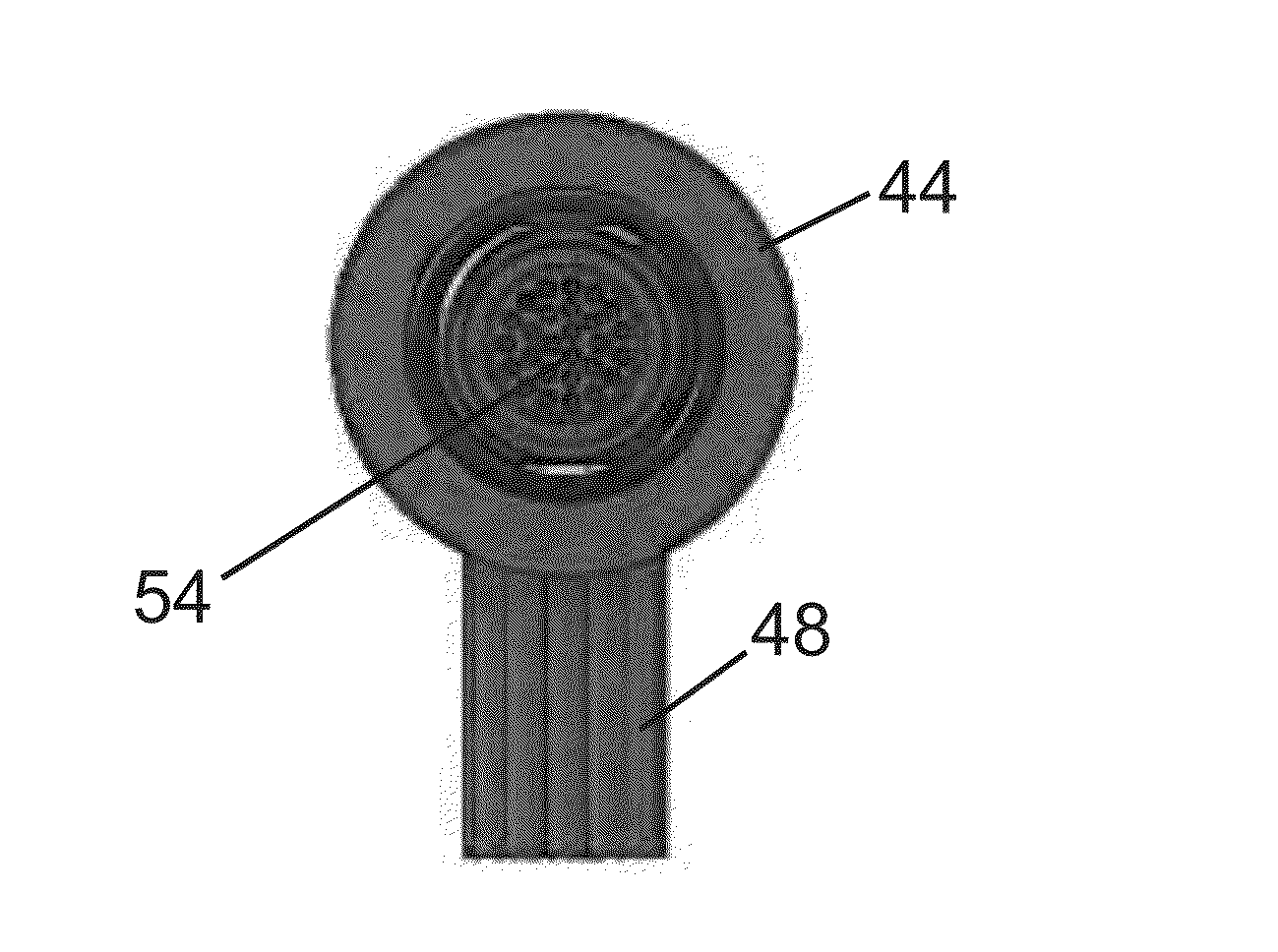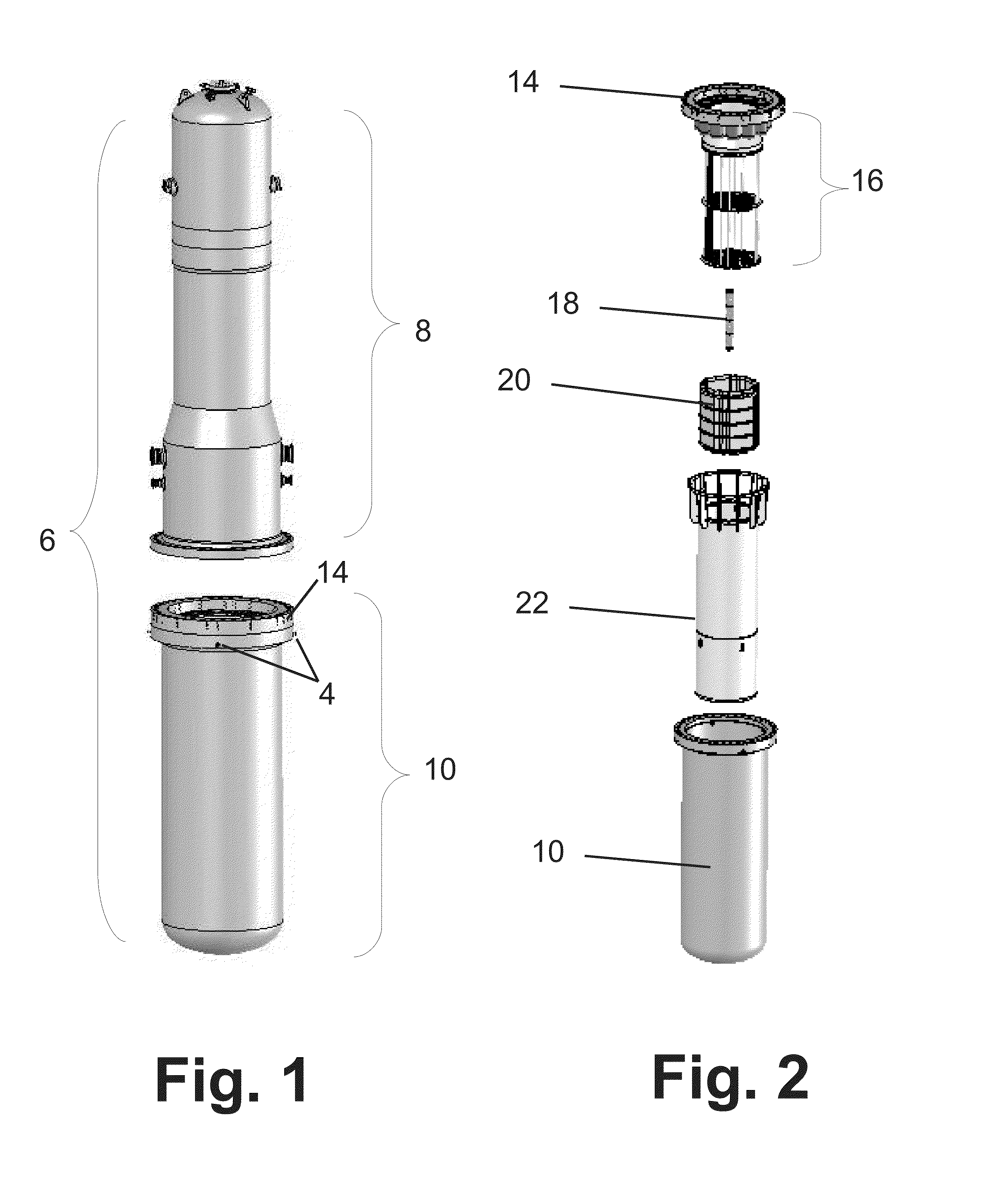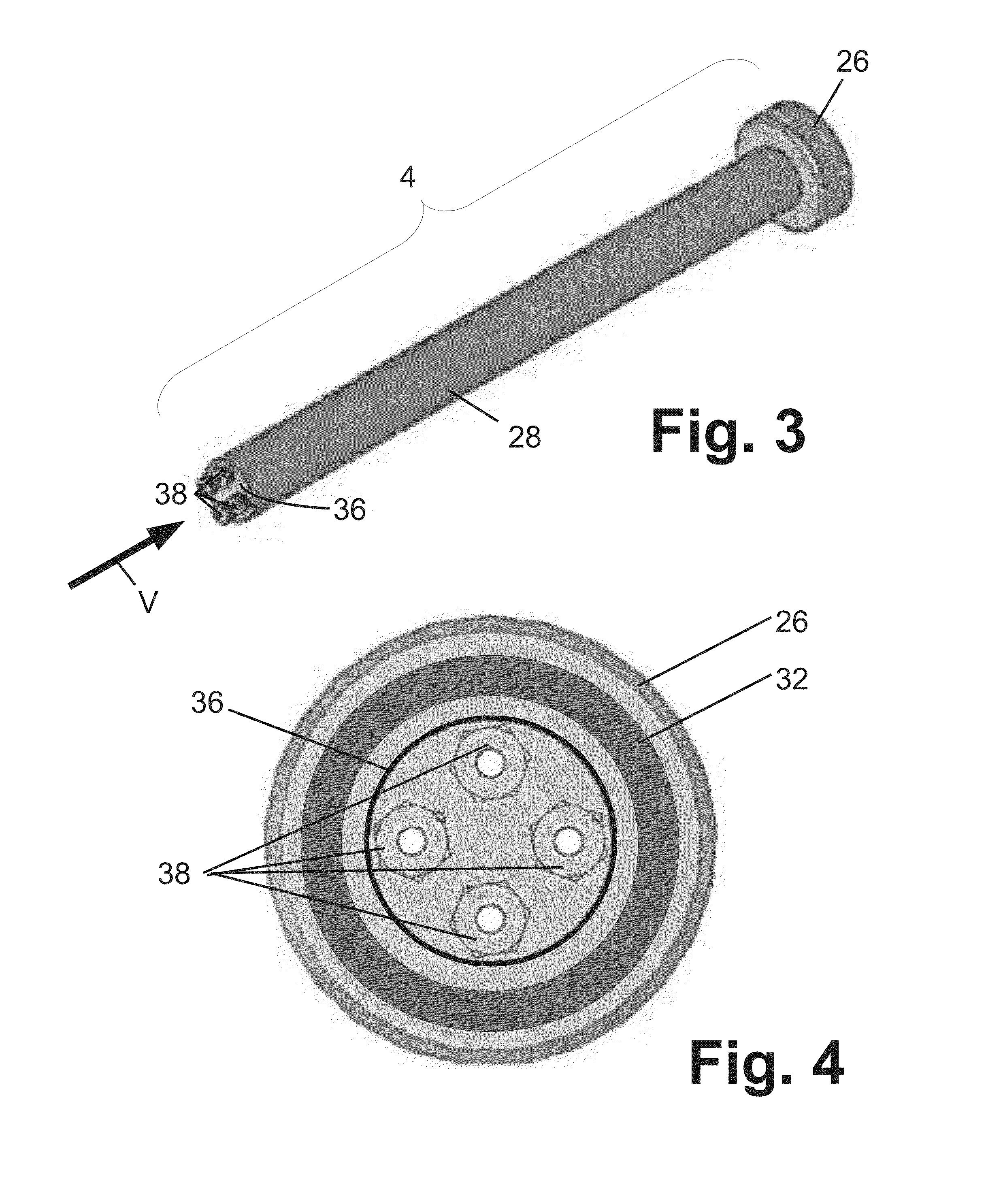Electrical feedthroughs for nuclear reactor
a technology of nuclear reactors and electrical feedthroughs, applied in the field of nuclear reactor arts, nuclear power generation arts, nuclear reactor instruments, etc., can solve the problems of unisolable primary leakage, uncovered core, and requiring reactor shutdown
- Summary
- Abstract
- Description
- Claims
- Application Information
AI Technical Summary
Benefits of technology
Problems solved by technology
Method used
Image
Examples
Embodiment Construction
[0024]FIG. 1 illustrates an integral reactor pressure vessel 6 including an upper vessel 8 and a lower vessel 10. The vessel portions 8, 10 are joined at a mid-flange 14 during operation, but FIG. 1 shows the upper vessel 8 lifted off the lower vessel / midflange 10, 14 (e.g., for refueling). which are shown separated in FIG. 1. The lower vessel 10 includes illustrative feedthroughs 4. In an integral reactor, the vessel houses the reactor core, reactor internals, and steam generator in a common pressure boundary, i.e. in the pressure vessel 6. The integral reactor of FIG. 1 is designed so that the upper vessel 8 contains the steam generators and may be removed as a unit (including the steam generators) for refueling.
[0025]A common design goal for any reactor is to minimize the number of reactor vessel penetrations, but penetrations cannot be completely avoided as core components must have electrical, hydraulic, and instrumentation lines enter the reactor. Examples of core components t...
PUM
 Login to View More
Login to View More Abstract
Description
Claims
Application Information
 Login to View More
Login to View More - R&D
- Intellectual Property
- Life Sciences
- Materials
- Tech Scout
- Unparalleled Data Quality
- Higher Quality Content
- 60% Fewer Hallucinations
Browse by: Latest US Patents, China's latest patents, Technical Efficacy Thesaurus, Application Domain, Technology Topic, Popular Technical Reports.
© 2025 PatSnap. All rights reserved.Legal|Privacy policy|Modern Slavery Act Transparency Statement|Sitemap|About US| Contact US: help@patsnap.com



